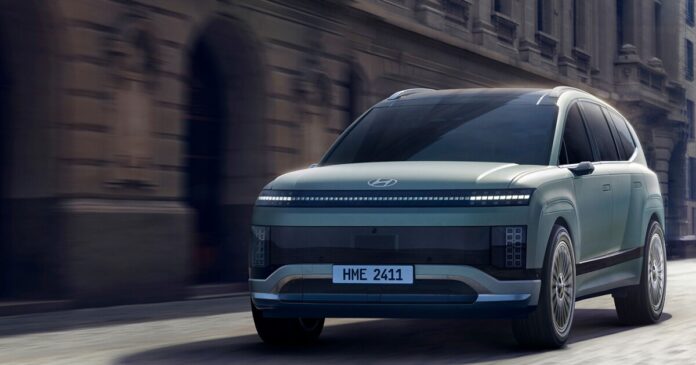Hyundai has just unveiled the Ioniq 9, an electric crossover SUV designed for families and camping enthusiasts. This new addition to Hyundai’s EV lineup is scheduled to launch in the US and other markets in 2025.
One of the notable aspects of this model is the array of thoughtful features that aim to maximize comfort. Here’s a breakdown of what you can expect, depending on your seating position.
The latest Ioniq offers three rows of seats, accommodating six or seven passengers based on the selected configuration for the second row. Hyundai claims this SUV boasts the longest wheelbase of any Hyundai model, measuring 3,130 mm (123.2 in). This provides up to 1,899 mm (74.7 in) of headroom and 2,050 mm (80.7 in) of legroom when combining the second and third rows. The first and second row seats can fully recline with footrests for a comfortable nap during charging.
Additionally, the four seats come equipped with a Dynamic Touch Massage feature that provides pressure and vibration for improved blood flow and circulation. The second row seats can also rotate to face each other when the vehicle is stationary.

Hyundai
The ‘Universal Island’ armrest between the front seats features a wireless charger, a cubby hole accessible from the front and rear, and a sliding function to provide amenities to second row passengers. A panoramic sunroof extends from the front to the back of the cabin.

Hyundai
Sounds good all around
Hyundai has focused on reducing interior noise in the Ioniq 9. The vehicle features sound-absorbing tires, structural reinforcements to minimize rough road noise, and the Active Noise Control-Road system introduced in 2020, resembling noise-canceling technology in headphones.

Hyundai
The Ioniq 9 is equipped with a 14-speaker Bose audio system supporting 5.1-channel surround sound. It also includes e-Active Sound Design, allowing for simulated engine sounds that adapt to driving conditions.
In the cockpit
Drivers of the Ioniq 9 benefit from various smart features for vehicle control, including a voice-controlled AI assistant, a curved 12-inch infotainment display, an augmented reality head-up display, and digital rearview cameras with dedicated 7-inch displays inside the car.

Hyundai
The digital rearview cameras display blind-spot views on the 12-inch digital gauge cluster, allowing drivers to see obstacles without taking their eyes off the road. The central rearview mirror functions as a screen, providing a clear view of the rear without straining.
The Ioniq 9 offers Level 2 ADAS driving assistance features, such as auto steering and adaptive cruise control. It can also notify the driver of potential obstructions behind the tailgate and alert them when traffic starts moving after standing still for an extended period.
Clever camping features
Hyundai promotes the Ioniq 9 as an ideal companion for outdoor excursions, incorporating practical camping features.
The vehicle includes multiple 100-W fast-charging USB-C ports for quick gadget charging before embarking on outdoor activities. The cargo area features a standard power outlet for charging appliances.
These power outlets can operate from the drive battery instead of the 12-V battery, eliminating concerns about losing battery power for the vehicle’s systems. Through bidirectional charging, the Ioniq 9 can also power a home with its 110.3-kWh pack.

Hyundai
If you decide to create a sleeping area by folding down the rear seats, you can independently control the rear zone’s climate to minimize unnecessary power consumption. There’s a convenient button in the cargo area for closing the tailgate without leaving your comfortable spot.
Plenty of choices
Upon its release, the Ioniq 9 will offer three powertrain options, three tire sizes, multiple trim levels, and a selection of 16 exterior colors.

Hyundai
All three powertrain variants offer a range of over 300 miles, with the Performance option delivering a bit less due to increased power. The base model generates 215 hp (160 kW) and accelerates from 0-60 mph in 8.5 seconds, while the Performance version achieves 420 hp (313 kW), reaching 0-60 mph in less than five seconds.
The vehicle supports Tesla network-compatible charging and can charge from 10% to 80% in 24 minutes using a 350-kW charger.

Hyundai
While pricing details are pending, estimates suggest the Ioniq 9 will start at around US$62,000, with the range-topping model reaching approximately $73,000. Given its impressive features, this SUV could make a significant impact in the family SUV market in 2025.
Source: Hyundai




